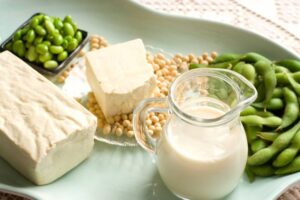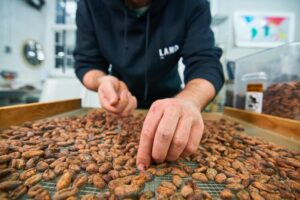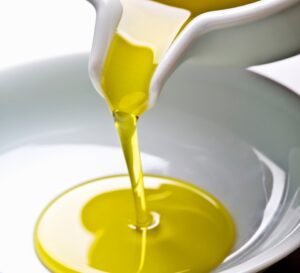A crop farmer can also harvest the secondary process, namely the processing of oil seeds. African farmers facing current economic realities are searching for new methods to survive and expand their operations. One of the many opportunities to increase markets, turnover and profits, is by adding value to farm produce. Options need to be carefully selected according to accurate information and knowledge of the opportunities offered on a regular basis, and considering the strengths and weaknesses of individual farms.
The aim of this series is solely to provide the reader with some basic information on food processing in order to realise the extent of the operations involved. This information concentrates on the sequence and steps involved in the processing of the selected product and explain the reason for and necessity of each step.
The needs and capabilities of every individual processing entrepreneur differ and can only be addressed properly by a team of experts. It will give the interested entrepreneur insight in the extent of operations and the sourcing of relevant designers and suppliers.
This series covers the processing of the following oil seeds into the products as described below:

Oil seed processing can offer different opportunities from the small entrepreneur to the large enterprise.
Soy beans
Soy protein concentrate: Defatted soy meal consists of 30 to 35% carbohydrates. By removing the soluble carbohydrate fraction along with some flavour components, the protein
concentration of the soy meal is increased. There are three different methods that can be used to concentrate soy meal.
- Acid leaching method (pH 4,5)
- Aqueous ethanol method (60 to 80%)
- Moist heat – water leaching method
Soy ice cream is classified as paravine, that is non-dairy frozen dessert. It resembles traditional ice cream, but contains soy protein products instead of milk protein.
Soy paste is one of the most important Oriental soy products. It is basically prepared from whole or flaked soybeans and other cereals (wheat, rice, barley) that is fermented, mixed with brine and fermented ag

Soya bean offers a wide variety of consumable products for humans and livestock.
ain to produce a salty, tangy condiment or seasoning for meat, fish, and vegetable dishes. It can also be used as a base for sauce to go with meat, seafood, poultry or vegetable dishes and as a stock for soups. It can be further spiced with hot peppers (chilli) to produce “hot soy paste”.
Soy sauce is the dark brown liquid extracted from the fermented soy-wheat mixture. It has a salty taste and sharp flavour. It is used as an all-purpose seasoning. Soy sauce is prepared from soy beans mixed with other cereals such as wheat that undergoes two separate fermentation processes.
Soy grits and flour are produced from the defatted soy flakes that are separated from the miscella during oil extraction. It only requires desolventising, grinding and screening to produce a highly nutritional product with wide application possibilities in the food and feed industry.
Soy yoghurt (soghurt) is a cultured soy milk product produced by fermenting the fortified soy milk with a mixed culture of Lactobacillus bulgaricus and Streptococcus thermophilus. The unflavoured product has a soft, smooth, custard-like consistency and a distinct acid flavour. The composition of formulated soy milk is very similar to dairy milk and therefore the manufacturing of soy yoghurt is the same as dairy yoghurt.
Soy milk is the aqueous extract of soybeans. It closely resembles dairy milk in appearance and composition. It has been consumed in Eastern countries for centuries. Soy milk prepared by traditional Eastern methods, has a flavour that is often described as “beany”, “rancid” or “bitter” by consumers of the Western world.
Soy oil is a high quality triglyceride ingredient and is used widely in commercial processed foods. The crude soy oil contains both oil soluble and water soluble impurities that need to be removed by a series of refining operations.

Get hold of proper specialists to ensure a headache-free processing operation.
Tofu is the soft, white curd prepared by coagulating water soluble soy proteins. It has a gel structure that resembles fresh cheese or firm set yoghurt.
Full-fat soy flour is prepared by grinding dehulled soy beans. The soybeans may be given a steam treatment prior to grinding to produce toasted full-fat soy flour. Toasted full-fat soy flour is used in a wide range of baked products and baby formulas.
Sunflower
Sunflower oil fat spread or margarine is a water-in-fat emulsion which closely resembles butter. It is firm when refrigerated, but melts rapidly in the mouth. It is made from a non-dairy fat and water mixture. The fat phase contains oil-soluble ingredients, for example mono and diglycerides, lecithin (optional), colouring agent and vitamins. The aqueous phase (16 to 18%) contains water with or without added edible protein. This “milk” may be prepared by adding dried protein to water and is then pasteurised, except for pastry and kosher margarine where only water is added.
Sunflower meal is good source of protein, but has limited application as human food because of the chlorogenic acid and caffeic acid content which causes an unappetising dark green discoloration of the products when the pH increases above a certain point. Milled sunflower seeds has potential use in bread, pastries, cake and as a thickener in various products, but finds its main application in animal and bird feed as a protein supplement.

A wide variety of valuable and popular products can be extracted out of a sunflower seed.
Sunflower oil is an important oil seed crop with good flavour stability, coupled with its high linoleic acid content. Sunflower seeds yield between 40 and 60% oil. The oil can be used as salad and cooking oils, shortening, and margarine. Cold-pressed oil is suitable for table use and hot-pressed oil, which is of lesser value, is used for soap-making, candle-making, lubricants and mixing paints. The residue oil cake (press-cake) is used as animal feed.
Sunflower oil – small-scale: The small-scale oil processor can process up to 300 kg of sunflower seed per hour.
Sunflower oil – medium-scale: The medium-scale oil processor can process 300 kg to 1 ton of sunflower seed per hour. Sunflower seeds yield between 40 to 60% oil of which 65 to 80% may be extracted using medium-scale oil presses or expellers. The oil is usually cold-pressed and yields high quality oil for frying, salad or shortening purposes. The oil generally retains anti-oxidants better compared to large-scale produced oil. This is important from a health and shelf-life perspective.
Sunflower snacks: Non-oilseed type sunflower seed can be processed to produce a snack item that can be included as an in
gredient in various products, for example muesli mixtures, snack bars or granola products. Small, cracked or partially hulled sunflower seeds are used as bird feed.

A medium-scale oil processor can process 300 kg to 1 ton of sunflower seed per hour.
Defatted sunflower meal: The milled sunflower seeds can be used in bread, pastries, cake and as a thickener in various products. It can be used as a bread supplement that is colourless, bland and a good source of protein. However, the sunflower seeds contain chlorogenic acid and caffeic acid and with pH changes change to an unappetising dark green colour, which renders the products unacceptable for human consumption. This can be overcome with the correct treatment of the seeds, especially for the manufacture of defatted flour.
We thank the ARC-Institute for Agricultural Engineering in South Africa, who made their manuals available to the readers of ProAgriMedia.









